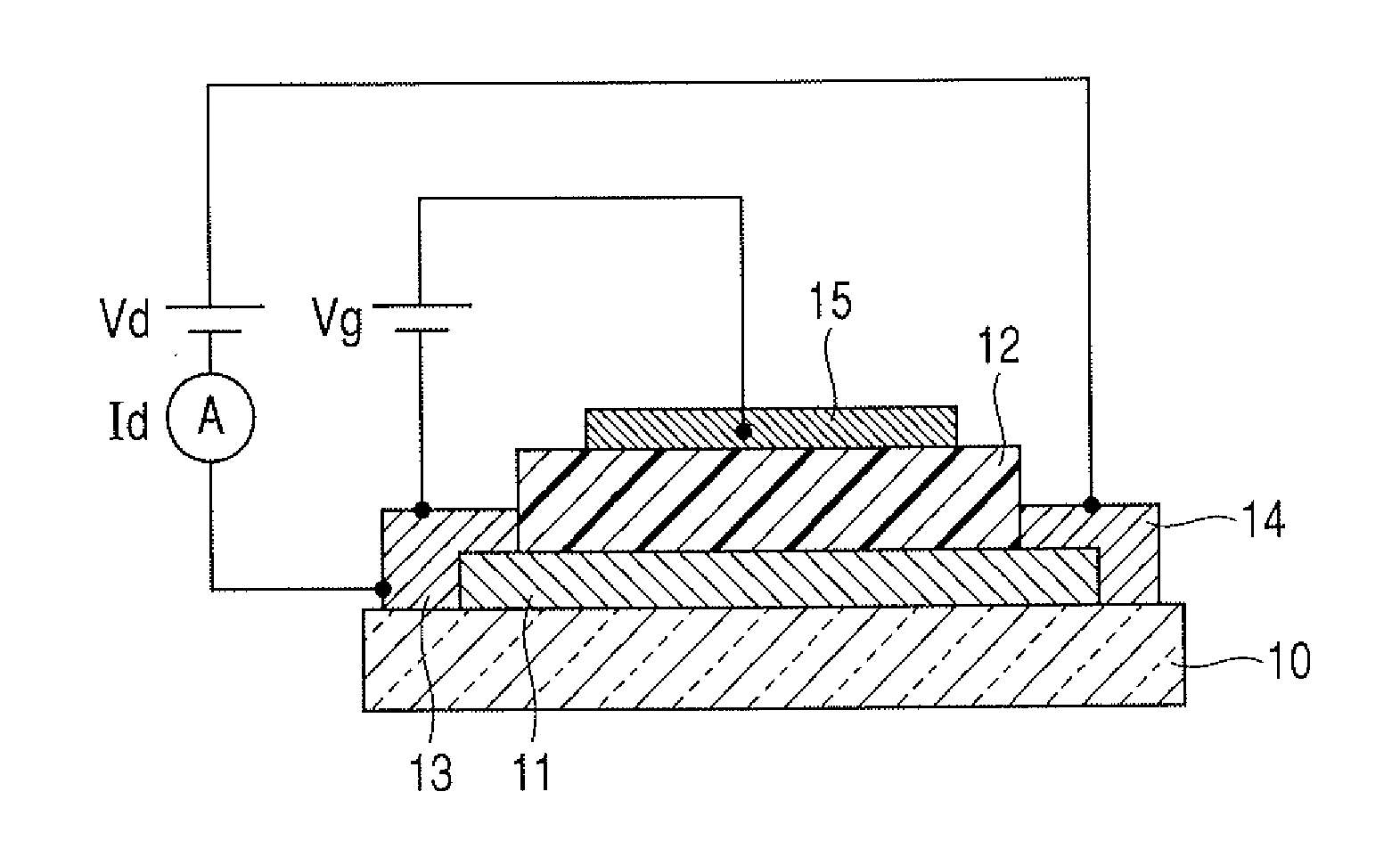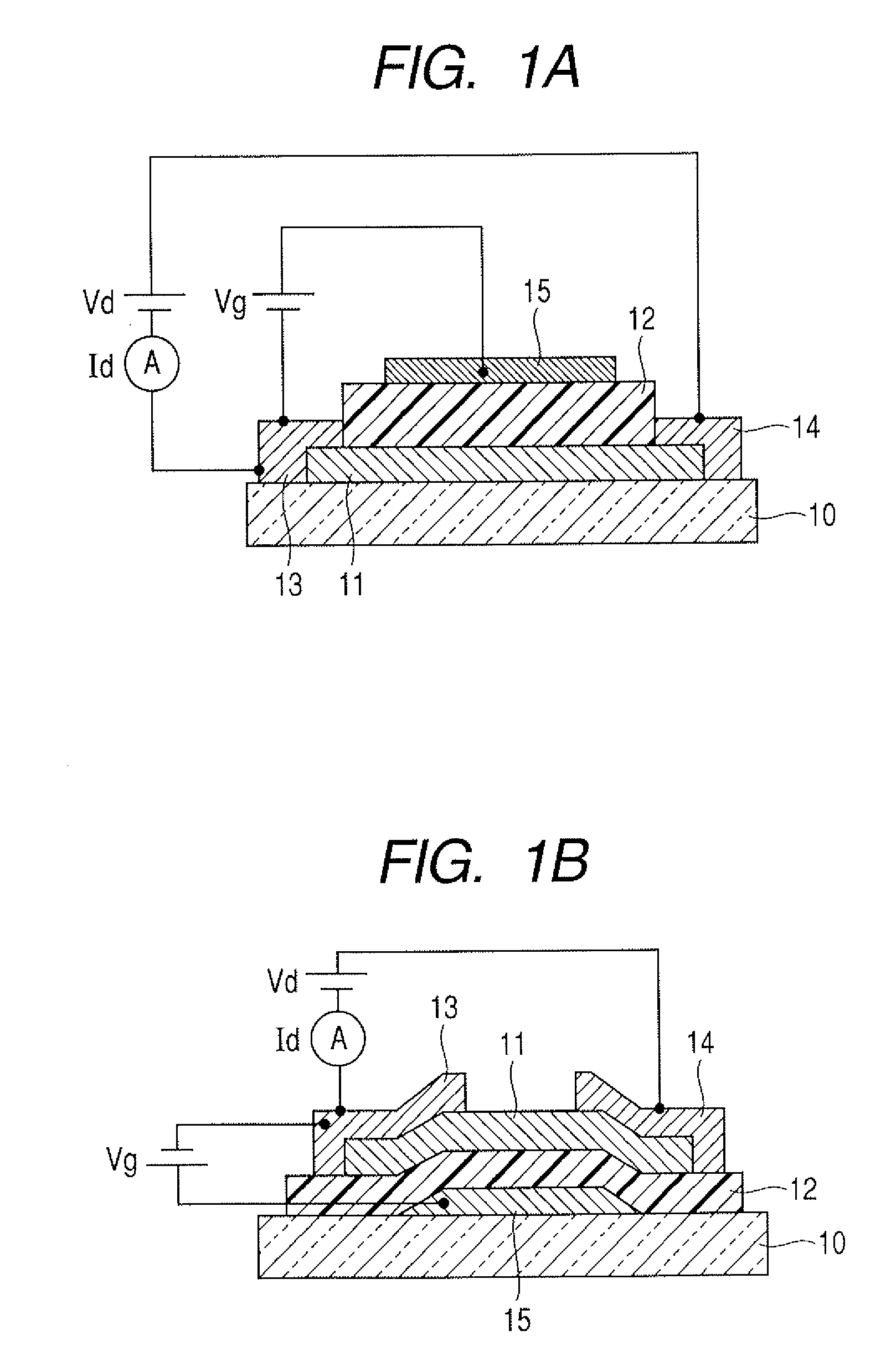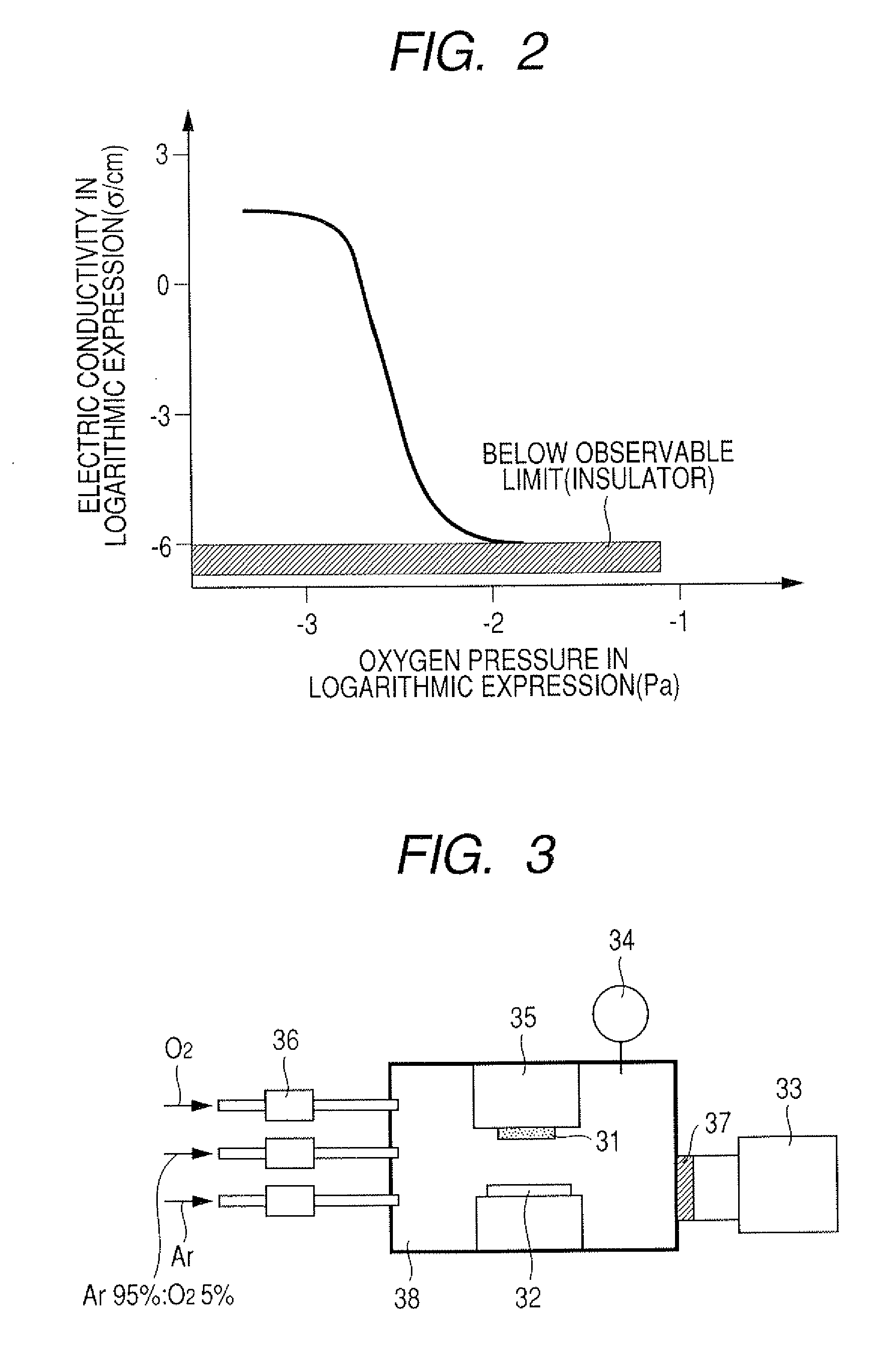Field effect transistor with gate insulation layer formed by using amorphous oxide film
a field effect transistor and amorphous oxide technology, applied in the direction of basic electric elements, electrical appliances, semiconductor devices, etc., can solve the problems of reducing the image quality of the display, affecting the operation stability of the transistor, so as to achieve good operation stability and good transistor characteristics.
- Summary
- Abstract
- Description
- Claims
- Application Information
AI Technical Summary
Benefits of technology
Problems solved by technology
Method used
Image
Examples
example 1
[0061]In this example, a top gate type TFT device as shown in FIG. 1A is prepared. The TFT includes a channel layer made of an In—Ga—Zn—O type amorphous oxide and a gate insulation layer made of amorphous YMnO3.
[0062]Firstly, an amorphous oxide film is formed on a glass substrate 10 (1737: tradename, available from Corning) as channel layer 11.
[0063]In this example, the In—Ga—Zn—O type amorphous oxide film is formed by high frequency sputtering in a mixture gas atmosphere of argon and oxygen. The ratio of In:Ga:Zn=1:0.9:0.6.
[0064]A sputtering film forming system as shown in FIG. 3 is used for forming the amorphous oxide film. In FIG. 3, there are shown a specimen (substrate) 31, a target 32, a vacuum pump 33, a vacuum gauge 34, a substrate holding unit 35, gas flow rate control units 36 provided for respective gas introduction systems, a pressure control unit 37 and a film forming chamber 38. The gas introduction systems include three systems for argon, oxygen and argon / oxygen mixtu...
example 2
[0077]In this example, a bottom gate type TFT device as shown in FIG. 1B is prepared. The TFT includes a channel layer made of an In—Ga—Zn—O type amorphous oxide and a gate insulation layer made of amorphous YMnO3 and formed at a substrate temperature of 300° C.
[0078]Firstly, a gate electrode 15 is formed to a thickness of 50 nm by using Au on a glass substrate 10 (1737: tradename, available from Corning). Photolithography and a lift-off process are used for patterning.
[0079]Then, a gate insulation layer 12 is formed to a thickness of 150 nm. The gate insulation layer 12 is a YMnO3 film prepared by means of a PLD process. The substrate temperature is set to 300° C. A process similar to that of Example 1 except the substrate temperature is used for the film formation process of the gate insulation layer. For patterning, photolithography and dry etching are also used.
[0080]Then, a channel layer of an In—Ga—Zn—O type oxide film is formed by high frequency sputtering in an atmosphere of...
example 3
[0083]In this example, a top gate type TFT device as shown in FIG. 1A is prepared on a plastic substrate.
[0084]The substrate is a polyethylene terephthalate (PET) film.
[0085]Firstly, a channel layer 11 of an In—Ga—Zn—O type oxide is formed to a thickness of 50 nm by high frequency sputtering in a mixture gas atmosphere of argon and oxygen with room temperature for the substrate temperature. The ratio of In:Ga:Zn=1:0.9:0.6. A process similar to that of Example 1 is followed for the film formation process of the channel layer. For patterning, photolithography and a lift-off process are also used.
[0086]Then, a source electrode 13 and a drain electrode 14 are formed to a thickness of 40 nm by using ITO.
[0087]For patterning, photolithography and a lift-off process are also used.
[0088]Then, a gate insulation layer 12 is formed to a thickness of 150 nm. The gate insulation layer 12 is a YMnO3 film prepared by means of a PLD process. The substrate temperature is set to room temperature. A p...
PUM
 Login to View More
Login to View More Abstract
Description
Claims
Application Information
 Login to View More
Login to View More - R&D
- Intellectual Property
- Life Sciences
- Materials
- Tech Scout
- Unparalleled Data Quality
- Higher Quality Content
- 60% Fewer Hallucinations
Browse by: Latest US Patents, China's latest patents, Technical Efficacy Thesaurus, Application Domain, Technology Topic, Popular Technical Reports.
© 2025 PatSnap. All rights reserved.Legal|Privacy policy|Modern Slavery Act Transparency Statement|Sitemap|About US| Contact US: help@patsnap.com



